COPYRIGHT, PLEASE NOTE
All the material on this website is copyrighted to J-P Metsavainio, if not otherwise stated. Any content on this website may not be reproduced without the author’s permission.
BUY A MUSEUM QUALITY POSTER
BUY A POSTER:https://astroanarchy.zenfolio.com/
Thursday, November 12, 2009
IC1848, The Soul Nebula
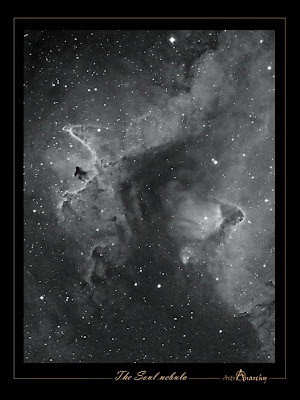
After three weeks of clouds, last night was three hours opening in the cloud cover.
Since my Observatory locates very near from my home, I managed to shot two hours of H-alpha light.
Seeing and transparency were really bad.
I'll shoot other channels and more H-a for this when ever weather allows.
.
Processing work flow:
Image acquisition, MaxiDL v5.07.
Stacked and calibrated in CCDStack.
Deconvolution with a CCDSharp, 30 iterations.
Levels, curves in PS CS3.
-
Telescope, Meade LX200 GPS 12" @ f4.65
Camera, QHY9
Guiding, SXV-AO @ 9Hz
Exposures, 6x1200s with Baader 7nm H-alpha filter
-
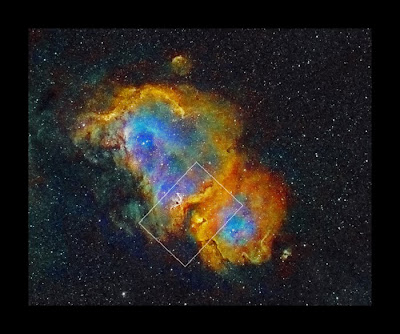
Image is a small part of the Soul Nebula.
Field of view is marked in my older, wider field, image of Soul nebula.
Original wide field image, with details, can be foun HERE
Monday, November 9, 2009
Cloudynights Forum Imaging Contest
Chategory of CCD Imaging & Processing, Oct09, Imaging and Sketching Contest Poll in Cloudynights forums
-
Each month, 6 images will be chosen from each gallery for the readers of that gallery to vote on. The winner will be placed in a site wide poll for our users to determine which is an overall winner.
- Original image and technical details can be found HERE
Labels:
publications
The power of Tone Mapping
I like to show an example of Tone Mapping procedure.
I have used this method now about two years with very good results.
A PDF-document of the Tone Mapping can be found HERE.
NOTE! Images have to be perfectly calibrated and gradient free to this method to work.
-
The image of Sharpless catalog objects Sh2-223, 224 and 225 shows two extremely dim supernova remnants in a same Three degrees field of view.
Original Post about this image can be found here:
http://astroanarchy.blogspot.com/2009/04/sh2-223-224-and-225-lightened-up.html
As can be seen, in Stacked and Stretched 16h H-alpha image, nearly nothing can be seen under a massive Star field.

In the next image objects can be clearly seen after a Star removal procedure.
If Stars are removed with care, no information from actual target is lost.
If there is some minor details lost during a procedure, they are placed back automaticly, when Stars are placed back to a image.

When Stars are removed, it's easy to use Levels and Curves to boost actual data. There is now no need to worry about bloating Stars.
Since Stars has no relevant color information in a Narrowband image, this method can be used. In a Broad band RGB-image stars has real colors.
The same method can be used for RGB-image as well, if Star information is handeld correctly and replaced back to an image after manipulation.
Stars are placed back as a "Screen mode" under the PhotoShop

A "Color Map", from S-II, H-a, and O-III channels (Starless)

This image has all the color information from the Starless channels combined to a HST-palette.
I call it to a "Color Map".
In HST-color palette, the idea is balance colors so, that no line is dominatring the color scheme.
Usually the H-a is the strongest channel and HST images tend to have a strong Green cast doe that.
With this method, channels are easy to stretch equal, since there is no stars to worry about.
Very weak signal can be used, but it's allways better to have enough signal to work with.
A final image

The final image combined from a Tone Map and Color Map images.
As can be seen in a image, there is no Purple halos around stars, as typically seen in a HST-palette images, doe the strong stretching usually needed for a weaker channels.
In this image Stars are placed back. Whan stars are in separate layer over the Starless image, the tranparency can be tweaked carefully to balance visibility of Stars and Objects.
There is several methods to combine Stars and Objects. Stars can be placed as a Lighten mode in PS or by using the Screen mode. The right method depends of imagetype and some testing is needed by a user. Images can be combined by simply stacking them to gether as well.
We can't use H-a as a luminance alone, since it doesn't containe any information from other channels.
the weak signal from S-II and O-III channels is added to a H-a luminance
by a method descripted in a Tone Mapping PDF-document.
The result can be seen in the image above.
-
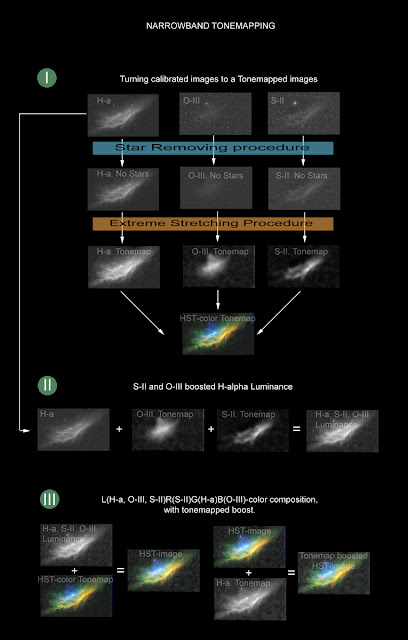
-
Please, if you have tested this method, send a comment here.
Direct link to a you Tone Mapped image could be nice as well.
I need some feedback to be able to further improve this Work flow.
Labels:
research and development
Wednesday, November 4, 2009
RGB and Narrowban data Testing
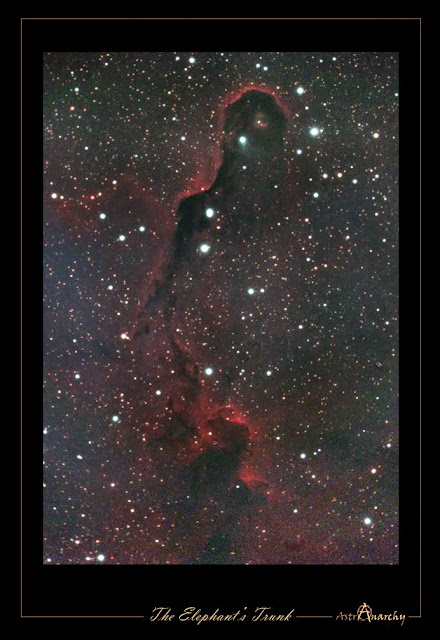 Original RGB-image from 2007
Original RGB-image from 2007 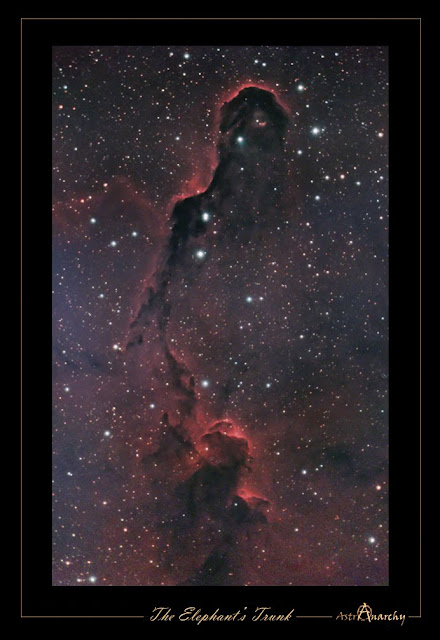 RGB + Natural color narrowband data 50%/50%
RGB + Natural color narrowband data 50%/50% 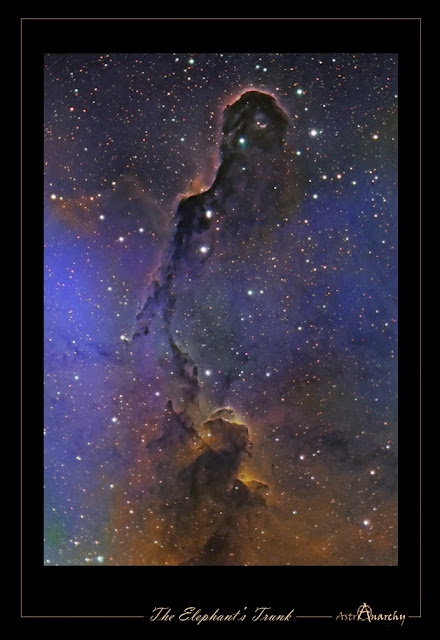 RGB + HST-narrowband. Mixed 40% as luminance/60%HST + star color 100% from RGB - -
RGB + HST-narrowband. Mixed 40% as luminance/60%HST + star color 100% from RGB - -
I found an older RGB-image of Elephant's Trunk Nebula, from year 2007.
It's imaged with a UHC-s filter. this filter gives real Star colors. Camera was a single shot QHY8 cooled astro camera.
Exposures for RGB image:
Meade LX200 Gps 12"@f6.3 with a UHC-s filter, 5x900s only.
-
I have combined this RGB image to a reacently imaged narrowband data.
Interesting looking combination, softer look and real Star colors.
Labels:
research and development
Subscribe to:
Comments (Atom)









